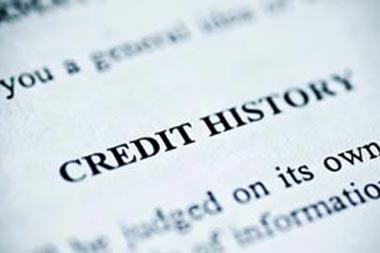You probably have it in your head that your credit report is “good” or “bad.” But with credit reports, beauty is in the eye of the beholder. The credit report itself is just a compilation of facts about your financial habits and it is, in fact, judgment-free.
It’s up to lenders, insurance companies or others that review your credit reports to evaluate that information, and they usually do that with the help of credit scores. Of course the information used to calculate your credit score is found in your credit report. So you don’t really want to see one without the other! (It just so happens you can do all of this -- get an overview and explanation of your credit report and see your credit scores -- using Credit.com’s Credit Report Card. It’s free.)
There’s a popular misconception that your credit report is a computer file sitting at a credit reporting agency being periodically updated. But it doesn’t quite work that way. When someone requests your report, the credit reporting agency’s computers go to work, compiling information that matches your identifying information into a report that can be scored or provided to the lender, insurance agency or other company that purchased it.
Experian has described it this way: You may have all the ingredients you need in your kitchen to make a particular dish, but until you put those ingredients together, the dish doesn’t exist.
There are three main companies that compile and sell credit reports nationwide: Equifax, Experian and TransUnion. They don’t share information with each other, and the data each one collects and reports may be different as a result. That’s why it’s a good idea to review your reports with each of these agencies. You can get them once a year at annualcreditreport.com and you may be entitled to extra free copies under federal law. (Our Credit Report Card and the accompanying scores are based on your credit report data and essentially translates the information in the raw credit file into something more user friendly.) And if you’re planning on trying to build better credit, you might consider subscribing to a credit monitoring service that provides additional features.
What’s In Your Credit Report?
There are four main categories of information in your credit report: personal information, account information, public record information and inquiries.
Personal information includes the items used to help identify accounts that are yours when your report is compiled:
- Your current and former names (if you’ve married or divorced and changed your name, for example)
- Your Social Security number
- Current and former addresses and variations
- Employment information
What to look for here: Don’t be surprised if you see out-of-date employment information. Lenders don’t usually rely on that data. But do investigate if you see addresses that are clearly wrong -- in another state, for example -- or variations of your name you don’t recognize. They could mean your credit information is getting mixed up with that of someone else, or they could be a sign of identity theft.
Account information (a.k.a. “tradelines”): This is the meat of your credit report and usually is the most detailed and longest section of your credit report. It may include:
- Credit cards, department store cards, gas company cards
- Vehicle loans or leases; RV and boat loans
- Mortgages and home equity loans
- Consumer finance company accounts
- Credit union credit cards or loans
Each individual account will list details such as:
- Lender name and account number
- Date the account was opened and closed (if applicable)
- Original and current balance
- Monthly payment amount
- Payment history
- Current status (paid as agreed, 30 days late, etc.)
What to look for here: Remember when we said that credit reports are compiled when requested? That means that your credit report includes the latest information reported by your lenders. If your lender hasn’t reported that you paid your balance off yet, for example, the last balance reported will show up here. It may take up to 30 days for your current balance to be reported. (And by then, it may have changed again!)
Also remember that some accounts, like medical bills, are only likely to show up on your credit reports if they have been turned over to collections. And since reporting accounts is voluntary, you may not see all of your loans on your report.
Public Record Information includes items that are part of the public record, which means they have been recorded with a court. This section can also contain collection accounts, even though those are not part of the public record. What you’ll find here:
- Civil judgments (criminal information is not reported on standard consumer reports)
- Bankruptcies
- Federal, state and county property and tax liens
- Collection accounts
What to look for here: Make sure dates and balances are reported correctly. Dates are especially important because they determine when these items will come off your credit reports. And while paying a collection account may be the right thing to do, and may help you avoid being sued for a debt, it won’t likely boost your credit scores.
Inquiries note when someone has obtained your credit information. There is nothing that indicates whether you were approved or rejected for credit at that time. Some inquiries can affect your credit scores, but not all do. Soft inquiries usually aren’t seen by anyone else but you, and they usually won’t affect your credit scores. These include:
- Consumer inquiries, which indicate that you’ve requested your own credit information.
- Promotional inquiries, usually for prescreened credit cards. Tip: You can remove your name from these marketing lists by calling 1-888-5OPT-OUT.
- Account review inquiries created when your current lenders request your credit information.
- Employment or insurance-related inquiries
Mortgage, auto and student loan inquiries within a recent time period (usually 30 or 45 days, depending on which scoring model is used) are ignored. And going back in time, inquiries of these types that occur in a short period of time are usually grouped together.
What to look for here: Look into inquiries from companies whose names you don’t recognize. While it’s possible that they could be from companies you’ve done business with (if they report under a different company name), they could also indicate fraud.
Next Steps
Once you’ve reviewed your credit report carefully, your next steps will be to:
- Dispute mistakes and
- Get your credit score to understand how lenders may view the information in your reports.
---
Credit.com provides readers with unique insight, helpful tips and straight answers about their financial world. Our team of reporters and experts explore credit, loans, debt, saving, and identity theft topics, all designed to help you make smarter financial decisions. Visit Credit.com to sign up for your FREE Credit Report Card and find out where you stand today!
---
Gerri Detweiler Credit.com's Personal Finance Expert, Gerri focuses on financial legislation, budgeting, debt recovery and consumer savings information. She is also the co-author of Debt Collection Answers: How to Use Debt Collection Laws to Protect Your Rights, and Reduce Stress: Real-Life Solutions for Solving Your Credit Crisis as well as host of TalkCreditRadio.comTalk Credit Radio. Reach Gerri at creditexperts@credit.com.












